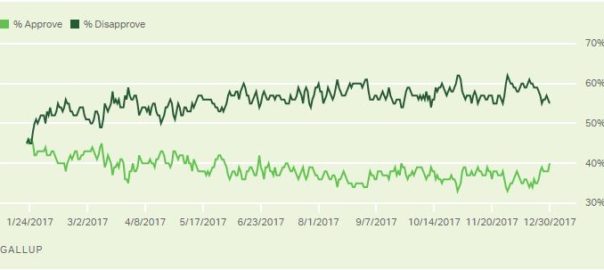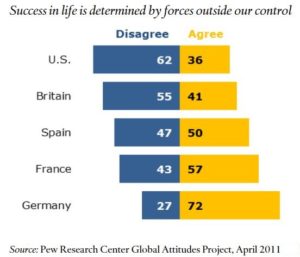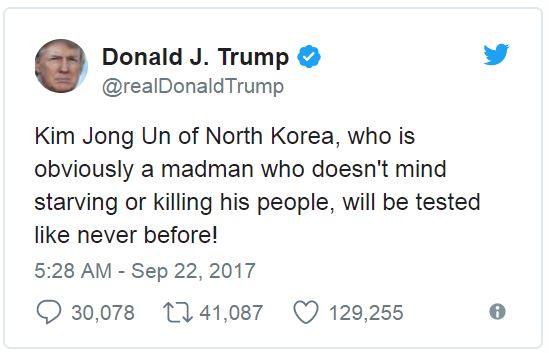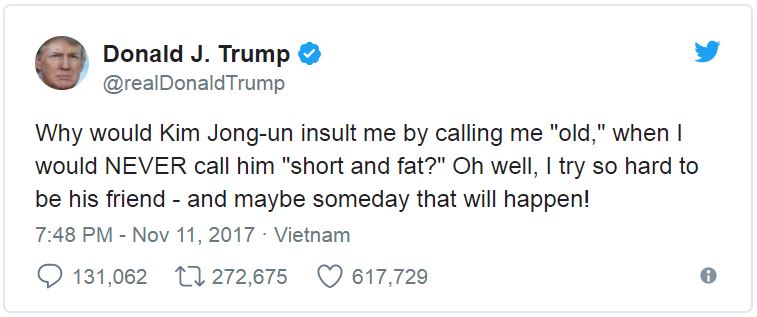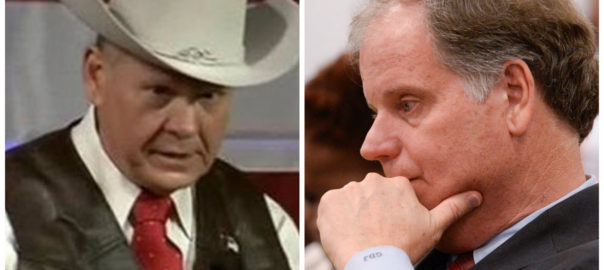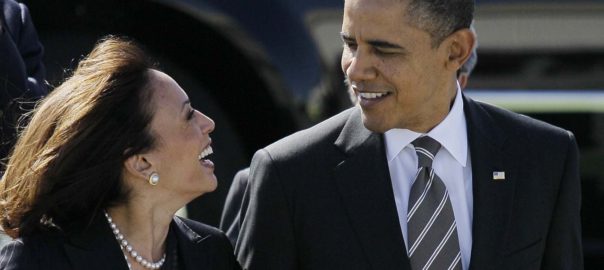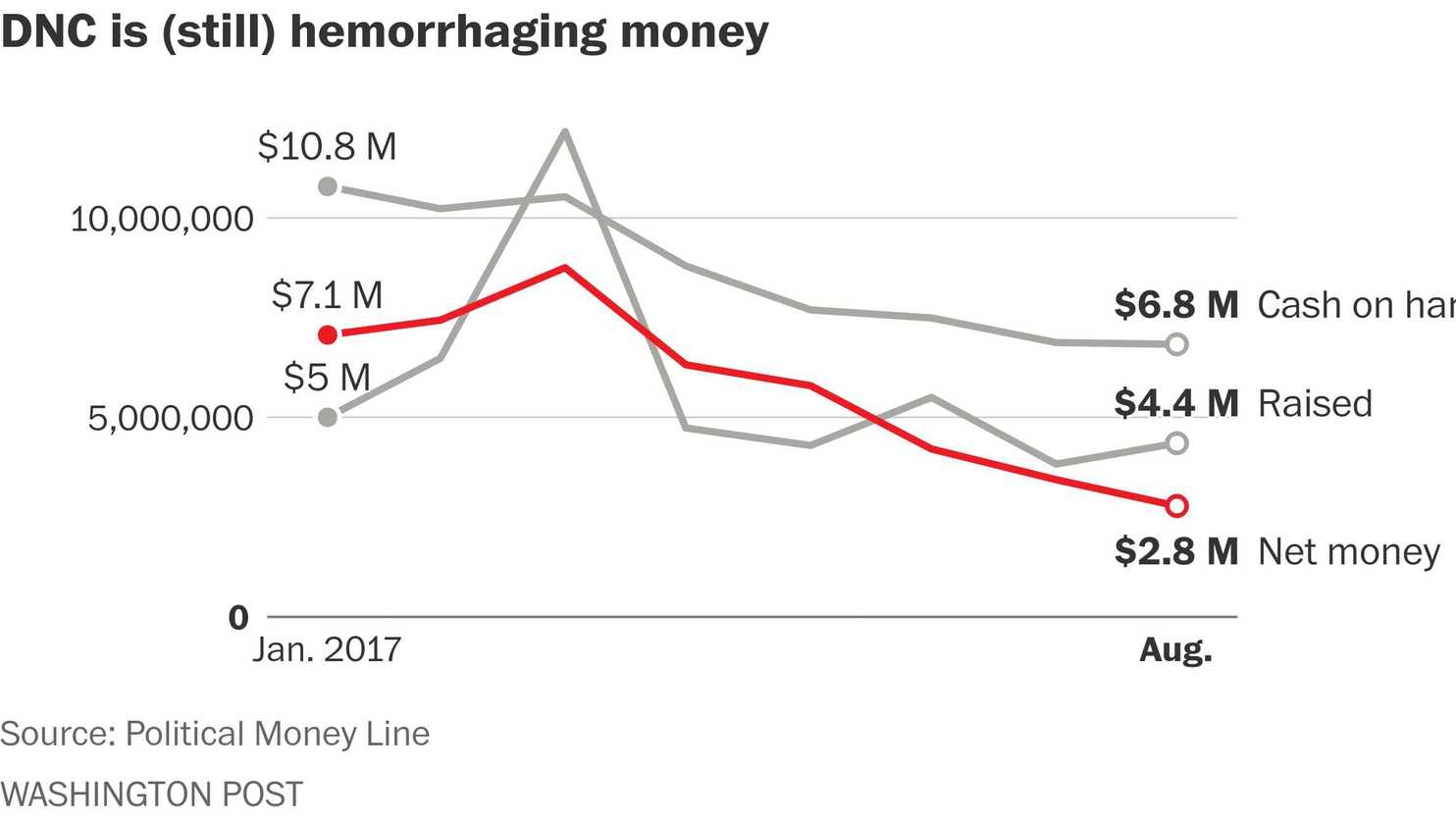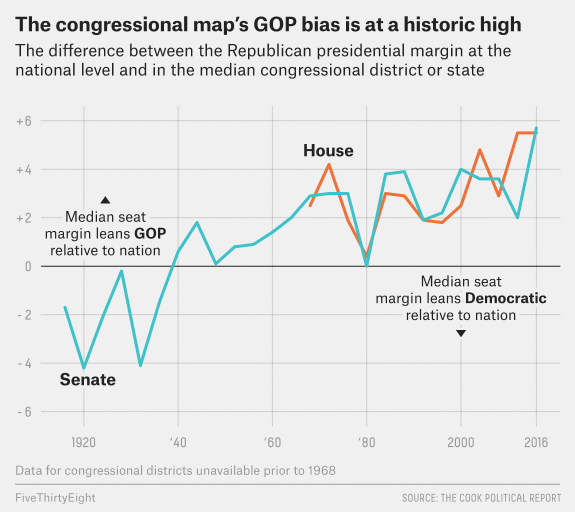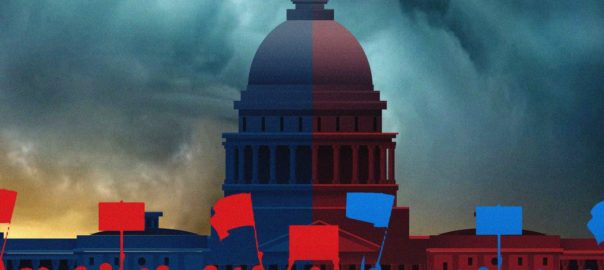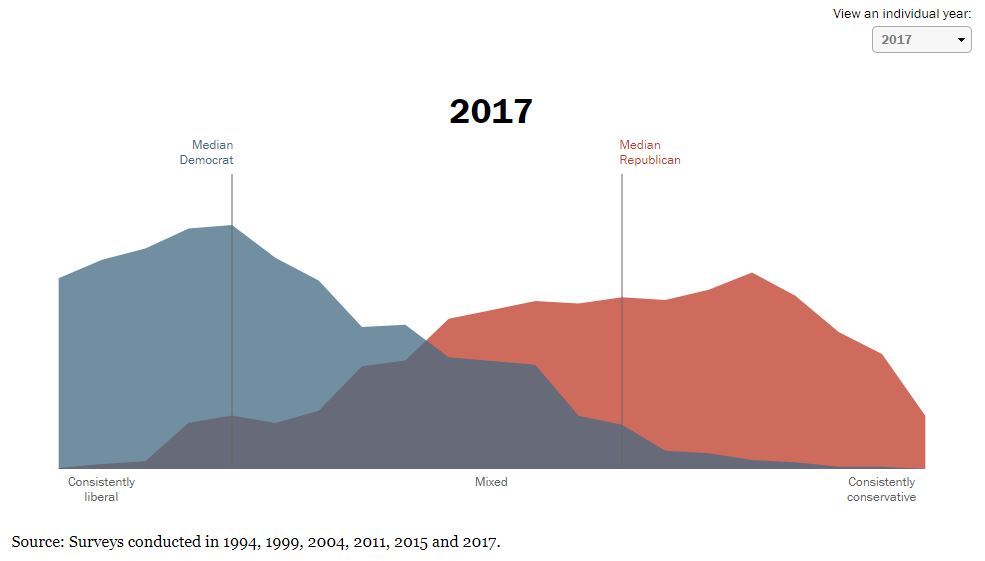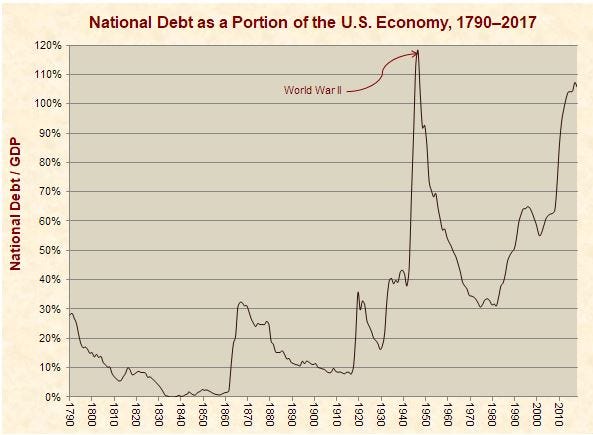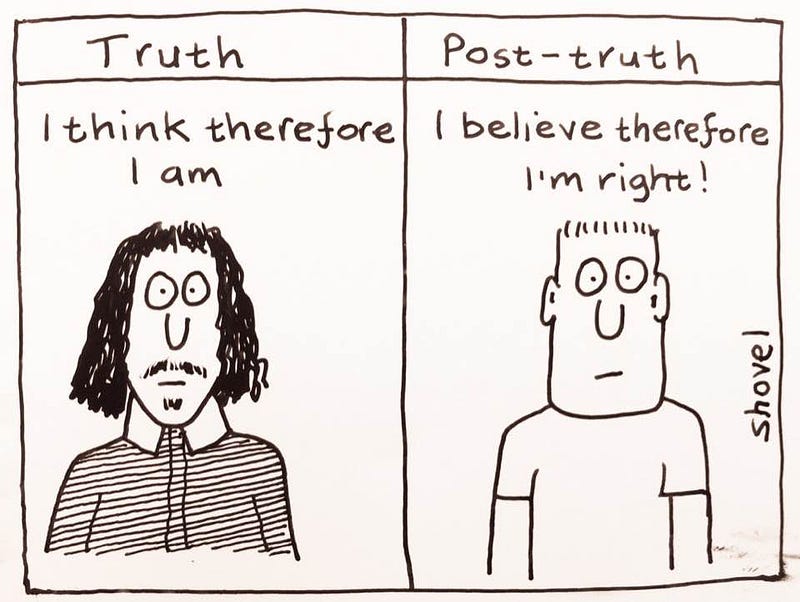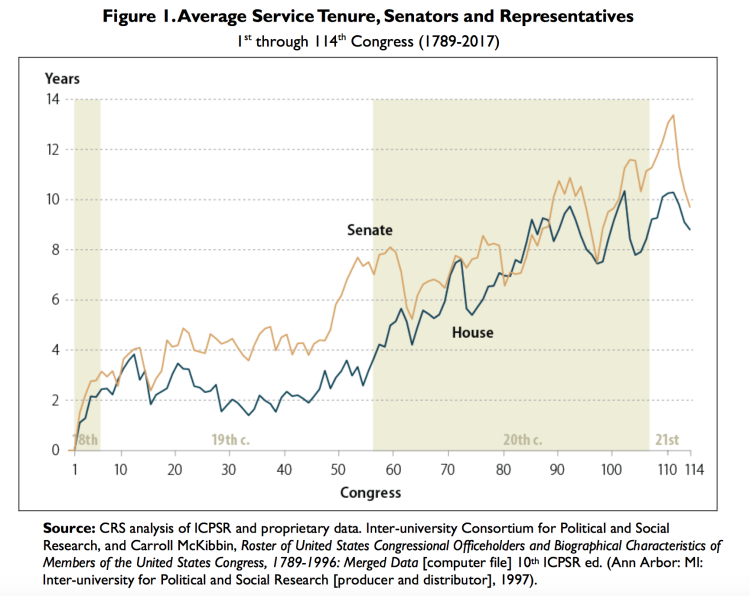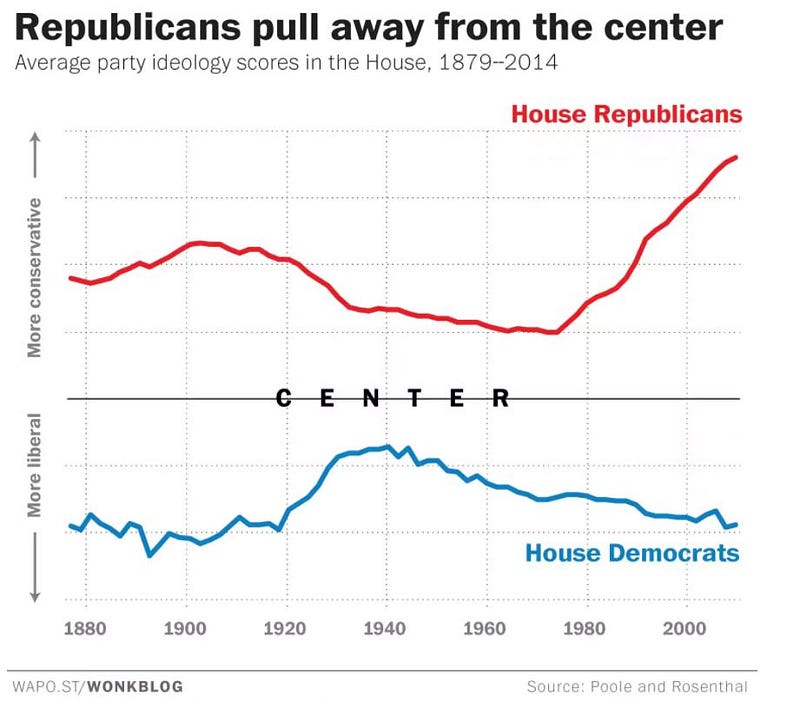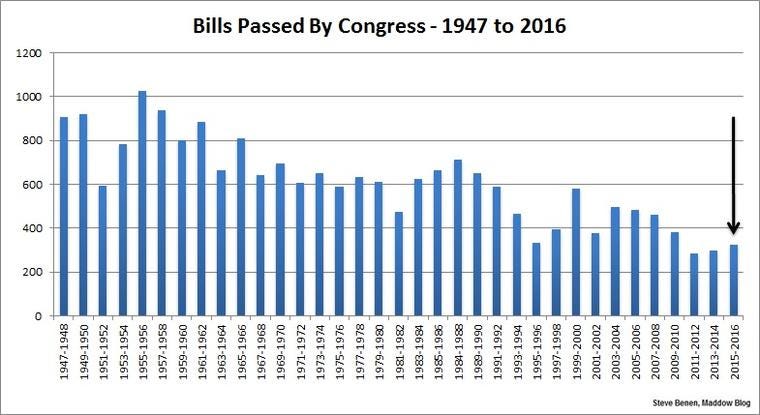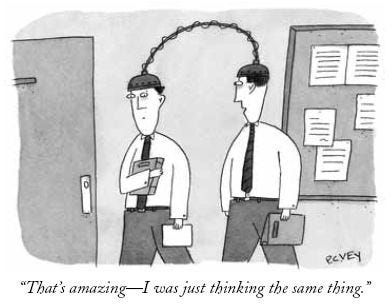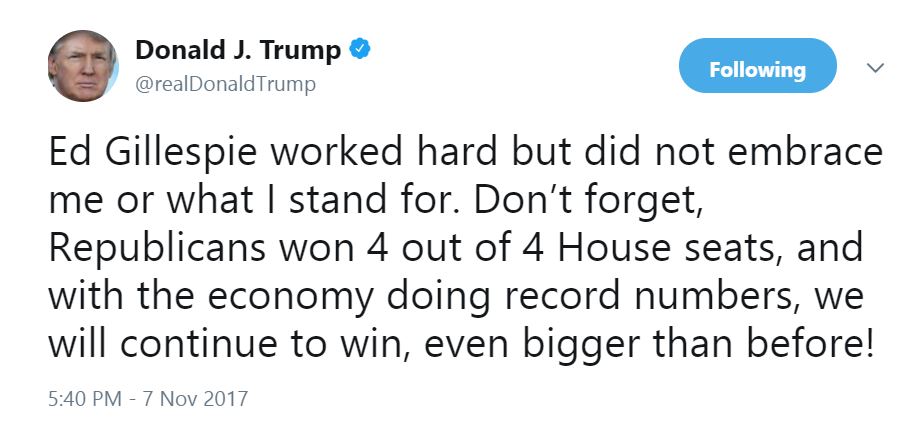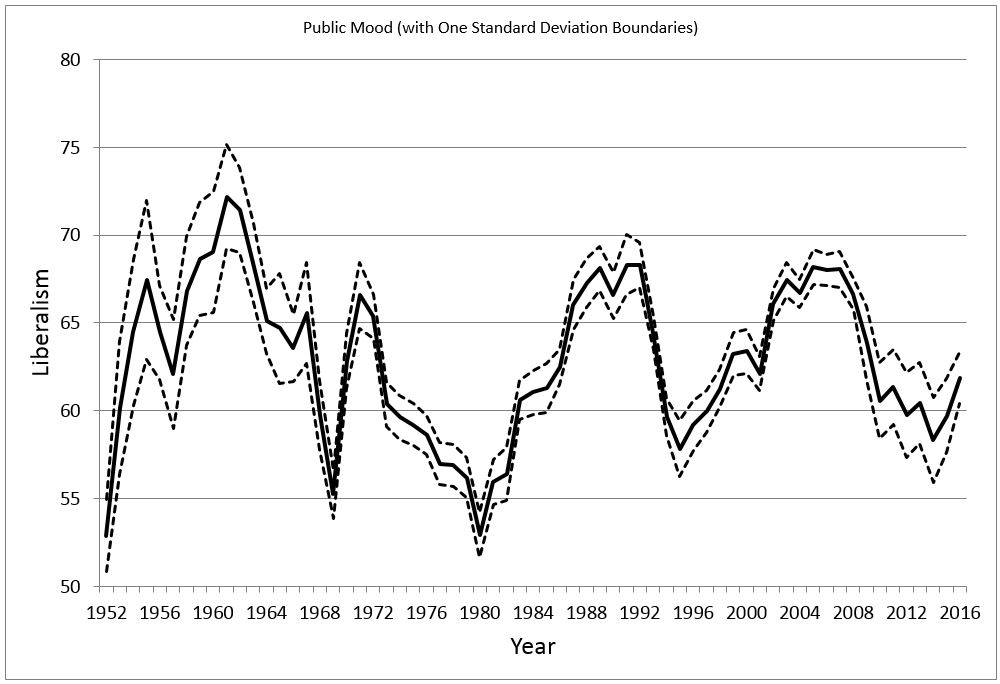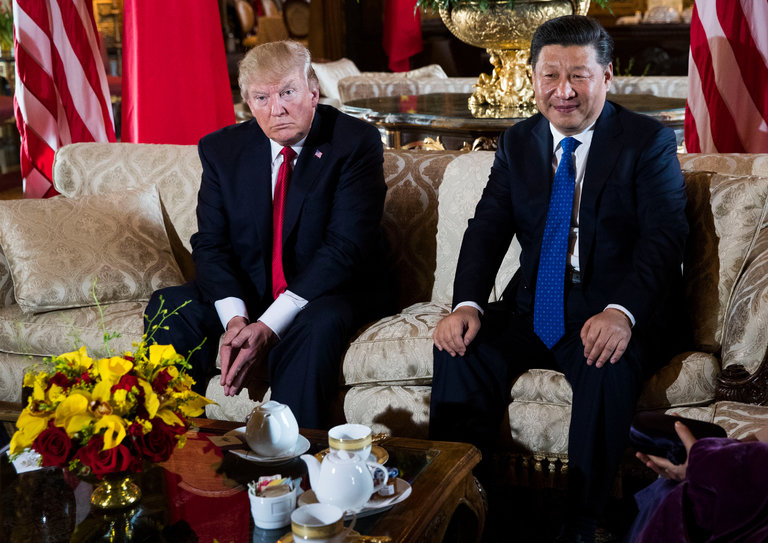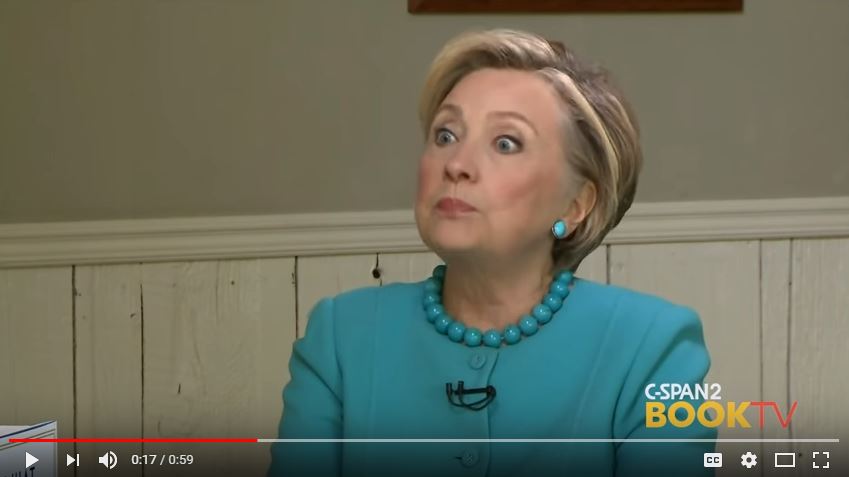By Kent R. Kroeger (Source: NuQum.com, December 11, 2017)
{Send comments to: kkroeger@nuqum.com or kentkroeger3@gmail.com}
As journalism dies in this country, the major news media organizations are gaining customers. These two trends are not unrelated.
First, television and digital news audiences for many media outlets have been steadily growing since the election of Donald Trump. He is their dream come true.
According to the News Media Alliance, “Newspaper websites in the United States have seen an increase in paid subscribers (in 2017) — The New York Times has grown to more than 2 million paid digital-only customers, while The Wall Street Journal passed the 1 million mark.”
Despite being branded as ‘fake news‘ by President Trump, CNN saw its 2017 3rd Quarter ad revenues grow by 9 per cent compared to last year. Likewise, CNN’s biggest competitor in the anti-Trump television news business, MSNBC, saw its prime time viewership grow 26 percent in November 2017 compared to November 2016.
Say what you want about President Trump, he is good for the news business.
The second trend is not a good one, however. Journalistic practice within national news outlets appears to be in a straight-line decline. Every few weeks now a news story has to be publicly retracted for fundamental inaccuracies. Perhaps more disturbing is that these journalistic fumbles aren’t just happening at the 24-hour-news-cycle-dependent television networks, but at the major national newspapers as well.
The most recent “reporting error” occurred on December 8th when CNN broke from its morning anti-Trump philippic to announce a “breaking news” CNN exclusive regarding an email in which WikiLeaks supposedly offered the Trump campaign prior access to the DNC’s Russian-hacked emails before they were made public.
According to CNN, multiple anonymous sources confirmed the e-mail contents.
MSNBC and CBS quickly repeated the CNN report on their own news platforms, presumably because they too had independently confirmed the e-mail contents.
This story, had it been true, would have been the first piece of concrete evidence that the Trump campaign colluded with a reputed Russian intelligence intermediary (i.e., WikiLeaks) to coordinate the release of information meant to damage the Hillary Clinton presidential campaign.
But, the story wasn’t true. Whatever email it was based upon, the journalists hadn’t actually seen; otherwise, they would’ve known that their timeline was off, rendering their ‘exclusive’ null-and-void.
Were the journalists set up by Trump sympathizers in the government? Were they set up by Never-Trumpers in the government that just wanted to keep the Trump-Russian collusion story alive? If CNN had any integrity left, they would try to get that answer for us. Prediction: They won’t.
The Intercept‘s Glenn Greenwald, one of the journalists that broke the Edward Snowden story in 2013 and a favorite target of the Democratic Party’s neo-liberal elites, offers a much more detailed description of CNN’s reporting error and its consequences in a recent article posted on theintercept.com. Additionally, his article lists just some of the recent reporting errors made by major news organizations:
- Russia hacked into the U.S. electric grid to deprive Americans of heat during winter (Wash Post)
- An anonymous group (PropOrNot) documented how major U.S. political sites are Kremlin agents (Wash Post)
- WikiLeaks has a long, documented relationship with Putin (Guardian)
- A secret server between Trump and a Russian bank has been discovered (Slate)
- RT hacked C-SPAN and caused disruption in its broadcast (Fortune)
- Crowdstrike finds Russians hacked into a Ukrainian artillery app (Crowdstrike)
- Russians attempted to hack elections systems in 21 states (multiple news outlets, echoing Homeland Security)
- Links have been found between Trump ally Anthony Scaramucci and a Russian investment fund under investigation (CNN)
All substantively false or misleading stories that were (and may still be) promulgated as fact.
Isn’t the Trump menace justification for a little journalistic fudging?
A prominent Democratic Party operative recently asked if Donald Trump is capable of feeling shame for his actions. It is reasonable to ask the national news organizations the same question.
“But Fox News is far worse,” is frequently the first response when anyone suggests the news media is biased (particularly against Trump).
Well, yes and no. There is no question Fox News, under Roger Ailes leadership, pioneered a potent form of partisan advocacy within the context of a “news” organization. Ailes’ project turned the Fox News Channel into the nation’s most powerful cable news network.
Ailes’ formula was simple. Take selective, often loosely connected, facts and weave a storyline that fits a particular narrative favorable to the agenda of political conservatives.
For example, part of President Obama’s early childhood education was spent in a Muslim-majority community in the Indonesia. This is a fact. As President, Obama’s 2009 speech at Cairo University apologized for some past U.S. actions with respect to the Muslim world. Two facts with virtually no direct or concrete connection, yet, some Fox News commentators (e.g. Sean Hannity) openly conjectured over the possibility that Obama was secretly more sympathetic to the Muslim world than he was towards the U.S.
No serious person trying to understand U.S. policy in the Middle East under the Obama administration would make that connection, but Fox News did without hesitation or regret.
Fox News was, in that instance, engaged in an extreme form of what my former journalism professor called ‘interpretive’ or ‘conjectural’ journalism. In its non-partisan form, newspapers used to run these types of stories under the ‘news analysis’ banner. Such journalism serves a valuable purpose.
Standard journalism often provides only a gestalt-like representation of an event (such as the Trump-Russia “collusion” investigation) and it is through interpretative (or conjectural) journalism that an event’s meaning or relevance becomes more apparent. Journalists and commentators are doing the public a service when they fill in those evidential gaps.
That is not what the major news organizations are doing today, however. Instead, many journalists, who are often wholly dependent on anonymous sources (often within the government) for their information, are being fed false or un-contextualized information in order to craft news stories that fit into pre-determined narratives (i.e., the Trump campaign colluded with the Russians to defeat Hillary Clinton). Who concocts these narratives? It ranges from individual journalists, the incumbent administration, political parties, private corporate interests, to some combination therein.
Are the front line journalists and commentators complicit or just pawns in this symbiotic relationship? Considering that most broadcast journalists and political analysts are hired for their prior experience in either political campaigns or government service, it is likely the relationship between the news organization, the journalist and the source is a mutually-rewarding one for all involved.
In the big picture, it matter less that journalists are being manipulated than the fact that false, misleading, and/or illegally leaked information is increasingly entering the nation’s information blood stream.
So, how can it be mitigated or stopped?
Given the large news outlets are witnessing significant growth in their bottom line financials since the 2016 election, it is naive to think the news organizations and their corporate owners will kill their own golden goose.
They won’t. But, perhaps, the public can start holding news organizations more accountable for abusing their dependence on anonymous sources (i.e., power elites) for news stories.
The national news media’s failure is more fundamental than just a few ‘false’ news stories…
After reading the Greenwald piece on CNN’s most recent Trump-Russia collusion story retraction, I dug out an old essay I wrote last spring critiquing another CNN news “exclusive” on information they uncovered linking the Trump campaign to Russian intelligence operatives.
The March 22nd CNN story exemplifies the failure of modern, American-style journalism.
The substance of CNN’s story (here), written by Pamela Brown, Evan Perez, Shimon Prokupecz and Jim Sciutto, was in its first two paragraphs:
—————————————————————————————————————-
(Washington) – The FBI has information that indicates associates of President Donald Trump communicated with suspected Russian operatives to possibly coordinate the release of information damaging to Hillary Clinton’s campaign, US officials told CNN.
The FBI is now reviewing that information, which includes human intelligence, travel, business and phone records and accounts of in-person meetings, according to those U.S. officials. The information is raising the suspicions of FBI counterintelligence investigators that the coordination may have taken place, though officials cautioned that the information was not conclusive and that the investigation is ongoing. (March 23rd revision, CNN.com)
—————————————————————————————————————-
I don’t doubt one word of the story. But that’s the problem. There is nothing to doubt. It is devoid of substance. Filtered throughout the entire story are modifiers like “possibly” and “may have.” It’s not a news story, it’s a tease for an actual news story.
With this CNN story, and many like it since, we are either being entertained with the ‘sausage-making’ details of investigative journalism or, worse, being manipulated by anonymous sources who share the goal of bringing down a presidency that don’t like.
Woodward and Bernstein popularized anonymous sourcing, but they also knew its proper role in investigative journalism…
As news consumers, we should all be asking ourselves: What does good investigative journalism look like? To what extent should we discount journalism that fails to meet our own expectations and standards for good news reporting?
These are not easy questions to answer. But in my own effort to answer them, I reached into the news archives and re-read the actual reporting that led to our nation’s first presidential resignation. For me, what I found was stunning and more relevant than ever.
So, find an old pair of white stripe “Big E’ Levi pants (with the flared boot cut) and follow me back in time to the early summer of 1972…
Washington, D.C. (June 18, 1972):
Richard Nixon is in the middle of his presidential re-election campaign when a news story breaks in The Washington Post. The headline on June 18, 1972 reads: 5 Held in Plot to Bug Democrats’ Office Here (Original Story Here). The first four paragraphs in the story, written by Alfred E. Lewis, reports about a simple break-in at the Democratic National Committee’s headquarters in Washington, D.C.:
—————————————————————————————————————-
(Washington) – Five men, one of whom said he is a former employee of the Central Intelligence Agency, were arrested at 2:30 a.m. yesterday in what authorities described as an elaborate plot to bug the offices of the Democratic National Committee here.
Three of the men were native-born Cubans and another was said to have trained Cuban exiles for guerrilla activity after the 1961 Bay of Pigs invasion.
They were surprised at gunpoint by three plain-clothes officers of the metropolitan police department in a sixth floor office at the plush Watergate, 2600 Virginia Ave., NW, where the Democratic National Committee occupies the entire floor.
There was no immediate explanation as to why the five suspects would want to bug the Democratic National Committee offices or whether or not they were working for any other individuals or organizations.
—————————————————————————————————————-
From this story, we know who, did what, where, when and how: Five men, a former CIA employee, three Cubans, at DNC offices, June 17th at 2:30 a.m. The most important paragraph is: There was no immediate explanation as to why the five suspects would want to bug the Democratic National Committee…or whether or not they were working for any other individuals or organizations.
Those questions, of course, eventually would be answered.
But this is just crime-blotter reporting. Right? It’s not investigative journalism. How can you compare court record regurgitation to the hard work required to understand the potential complexities of the Trump-Russia connection? You can’t. Enter Bob Woodward (who did the legwork on Lewis’ story) and Carl Bernstein — two young, ambitious Washington Post reporters who are given a story assignment that they cannot know beforehand how it will change this country’s history.
Their August 1, 1972 Washington Post story, three months before the general election, gives the first real glimpse into the potential scope of their investigation — which, itself, is mirroring an ongoing FBI investigation. Sound familiar?
The headline reads: Bug Suspect Got Campaign Funds (Original Story Here). The story’s primary information is not reliant on anonymous sources or baseless conjecture. No clever innuendo required:
—————————————————————————————————————-
(Washington) – A $25,000 cashier’s check, apparently earmarked for President Nixon’s re-election campaign, was deposited in April in a bank account of one of the five men arrested in the break-in at Democratic National Headquarters here June l7.
The check was made out by a Florida bank to Kenneth H. Dahlberg, the President’s campaign finance chairman for the Midwest. Dahlberg said last night that in early April he turned the check over to “the treasurer of the Committee (for the Re-election of the President) or to Maurice Stans himself.”
(Four more paragraphs down in the story…)
A photostatic copy of the front of the check was examined by a Washington Post reporter yesterday. It was made out by the First Bank and Trust Co. of Boca Raton, Fla., to Dahlberg.
—————————————————————————————————————-
The story is a little over three months old when a September 29, 1972 Woodward and Bernstein story carries the headline: Mitchell Controlled Secret GOP Fund (Original Story Here). The substance of the story connects the Watergate break-in to the Nixon administration:
—————————————————————————————————————-
(Washington) – John N. Mitchell, while serving as U.S. Attorney General, personally controlled a secret Republican fund that was used to gather information about the Democrats, according to sources involved in the Watergate investigation.
Beginning in the spring of 1971, almost a year before he left the Justice Department to become President Nixon’s campaign manager on March 1, Mitchell personally approved withdrawals from the fund, several reliable sources have told The Washington Post.
Those sources have provided almost identical, detailed accounts of Mitchell’s role as comptroller of the secret intelligence fund and its fluctuating $350,000 -$700,000 balance.
Four persons other than Mitchell were later authorized to approve payments from the secret fund, the sources said.
Two of them were identified as former Secretary of Commerce Maurice H. Stans, now finance chairman of the President’s campaign, and Jeb Stuart Magruder, manager of the Nixon campaign before Mitchell took over and now a deputy director of the campaign. The other two, according to the sources, are a high White House official now involved in the campaign and a campaign aide outside of Washington.
—————————————————————————————————————-
There is no rhetorical hedging with words like ‘may have’ or ‘possibly.’ Note also that Woodward and Bernstein rely on multiple, anonymous sources. And, more notably, these FBI sources, which are involved in an ongoing investigation, are willing to confirm names, dates, and timelines. There is no conjecture or speculation. The story is built on the best information available at the time. Further down in the story, Woodward and Bernstein give the reader some important background information on the anonymous sources themselves:
—————————————————————————————————————-
Sept. 29, 1972 Washington Post story continued…
The sources of The Post’s information on the secret fund and its relationship to Mitchell and other campaign officials include law enforcement officers and persons on the staff of the Committee for the Re-election of the President.
—————————————————————————————————————-
In today’s daily, often leak-driven, news cycle, such detailed background on anonymous sources is rarely provided. When it is, it is so vague and amorphous it denies the reader any real context to judge the veracity or reliability of the source(s).
While there are still special prosecutors and congressional hearings to be appointed and held in the future, Woodward and Bernstein’s investigative work reaches its apex in their story on October 10, 1972. Citing conclusions from the FBI and Department of Justice investigations, they lay the foundation for what will be a national obsession over the next two years. The Post headline reads:
FBI Finds Nixon Aides Sabotaged Democrats (Original Story Here). The story wastes no time cutting to the chase:
—————————————————————————————————————-
(Washington) – FBI agents have established that the Watergate bugging incident stemmed from a massive campaign of political spying and sabotage conducted on behalf of President Nixon’s re-election and directed by officials of the White House and the Committee for the Re-election of the President.
The activities, according to information in FBI and Department of Justice files, were aimed at all the major Democratic presidential contenders and — since 1971 — represented a basic strategy of the Nixon re-election effort.
During their Watergate investigation, federal agents established that hundreds of thousands of dollars in Nixon campaign contributions had been set aside to pay for an extensive undercover campaign aimed at discrediting individual Democratic presidential candidates and disrupting their campaigns.
—————————————————————————————————————-
On August 8, 1974, Richard Nixon resigns from the presidency, over two years after the Post’s initial break-in story.
Folks, that is how high-quality investigative journalism is conducted.
Sadly, we must return to present day journalism…
…the times have changed and journalists have been forced to change with it. The Washington Post in 1972 wasn’t competing with 24-7 cable news networks. And is it fair to compare the journalism on today’s CNN with The Washington Post or any other national-audience newspaper? They have different audiences and business requirements. Nonetheless, we should all expect more from today’s journalists than what we getting in the coverage of the Trump-Russia connection. The use of anonymous sources is just one mechanism today’s journalists use to generate more stories faster. The blurring of hard news with news analysis also increases the volume of content.
And though I am singling out CNN here, I could have cited any major news organization.
After the March 22nd CNN story broke, none other than Carl Bernstein himself said on Don Lemon’s CNN Tonight, “I don’t think there is any question there is a cover-up and the people in the FBI will tell you there is a cover-up going on.”
Perhaps Bernstein will be proven correct. But it is interesting that the other half of Woodward and Bernstein offered a different set of conclusions on the Trump-Russia investigation up to that point.
“Apparently, what had happened here is a couple of (foreign) diplomats who can be legitimately wiretapped were talking about meeting with Trump or people on his transition team,” said Woodward on the March 23rd broadcast of Fox News’s O’Reilly Factor. “Under the rules (for the U.S. intelligence community), and they’re pretty strict, it’s called minimization; you don’t name the American person who’s being discussed (and) the idea that there was intelligence value here is really thin…This could be criminal on the part of people who decided, ‘Oh, let’s name these people.’”
As of today, there is still no direct evidence of collusion between the Trump camp and the Russians. On the other hand, we know intelligence leaks and the improper naming of U.S. persons within intelligence reports occurred during the Obama administration in its effort to collect intelligence on the Trump campaign and transition team. In all likelihood, these were felonious acts.
My journalism school taught me about the reporting techniques of Woodward and Bernstein because they represented a clear break from the past. Our uncritical acceptance of anonymous sources today was not the norm in the early 1970s. The Watergate story would not have broken as quickly as it did without Woodward and Bernstein’s use of anonymous sources. But, as the above Post excerpts indicate, their inclusion was supported by considerable biographical information regarding those sources. And, even then, the Post received significant criticism (including by some journalists) for its use of anonymous sources.
So, while we should all take Bernstein’s comparisons of the Trump-Russia investigation to Watergate seriously, we need to be careful to separate fact from opinion. On Don Lemon’s show, Bernstein was giving an opinion based on unsubstantiated facts to which we lack direct access.
After hearing Bernstein’s conclusions, even Don Lemon had to admit, “Nothing has been found yet.”
That remains essentially true nine months later.
Perhaps the most rational (while also cynical) reaction to the March 22nd CNN story came from Kremlin spokesman, Dmitry Peskov: “This is another piece of information without any sources which can’t be commented on, neither can it be taken as some serious thing.”
Was he wrong?
Good journalism requires multiple, independent confirmations of the crucial facts and their cogent, unbiased recitation by the journalist(s) or news organization.
The Only Reliable Defense for Bad Journalism, ‘Fake News,’ and Russian interference is an Educated Public
Can we expect today’s news consumers to consistently recognize and ignore bad journalism that fails to meet even the basic journalistic standards? Perhaps not.
Can we expect the news and political opinion industries to self-police with respect to the dissemination of bad journalism and ‘fake news’? Most definitely not. ‘Fake news’ in particular has set up a permanent encampment on the Worldwide Web.
So what do we do?
We must empower individuals to draw their own conclusions regarding the news they consume, and only then will our society and political system be protected from the corrosive impact of bad journalism and ‘fake news.’
Until that day comes, the public is on its own. There is no industry or government solution to this problem (though, God knows, the Congress and lobbyists are already writing laws and regulations in the attempt to solve the problem).
Yet, there is reason for optimism based on research regarding the ability of news consumers to discern the levels of quality and bias in news reporting. One such study, a 2013 experiment conducted by the Ilmenau University of Technology and reported by the European Journalism Observatory (EJO), found that all types of news consumers (in terms of education and interest) could recognize the differences between high- and low-quality news. Another study, also reported by the EJO, concluded that “media users recognize comparatively well whether a news article is up-to-date, answers the important questions of who, what, why, when, and gives information about causes, consequences, and classifications of an event.” More importantly, the same research showed that media users are reasonably good at evaluating the bias in a new story. Where media users came up short, according to the researchers, was in their ability to determine if the information in the news article was accurate and comprehensive. That is where the news consumer is truly at the mercy of the journalist(s).
Therefore, as you digest future Trump-Russia collusion stories, I suggest you look for the following attributes to determine if the story is accurate and comprehensive:
- Are the story’s facts linked to named sources that would be expected to know such facts?
- If the story’s primary information heavily dependent on anonymous sources, is there sufficient background information provided on those sources to know if they would have likely access to this information? Has the journalist or news organization referenced these same anonymous sources in previous stories and has their information proved reliable?
- Does the journalist connect the story’s facts in a logical and comprehensive way or does it seem more like an ad-hoc collection of information with no inherent or obvious connection?
- Is the story full of weasel-words like: “possibly,” “may have,” “could indicate” or “suggests”?
As for Trump-Russiagate, the reporting has typically violated these attributes.
A good example is a February 14th New York Times story that broke the news that National Security Advisor Michael Flynn and the Russian ambassador talked about sanctions prior to Donald Trump’s inauguration (Original Story Here):
————————————————————————————————————-
(Washington) – Phone records and intercepted calls show that members of Donald J. Trump’s 2016 presidential campaign and other Trump associates had repeated contacts with senior Russian intelligence officials in the year before the election, according to four current and former American officials.
American law enforcement and intelligence agencies intercepted the communications around the same time they were discovering evidence that Russia was trying to disrupt the presidential election by hacking into the Democratic National Committee, three of the officials said. The intelligence agencies then sought to learn whether the Trump campaign was colluding with the Russians on the hacking or other efforts to influence the election.
The officials interviewed in recent weeks said that, so far, they had seen no evidence of such cooperation.
—————————————————————————————————————
That last paragraph should have sent any discerning news consumer immediately to the sports page. I am not quibbling with the Times running the story, even if the story read more like the notes a journalist would take while investigating a story. With today’s infinite shelf-space for news, a journalist’s daily notes now qualify as news. These are the times we live in.
Yes, the New York Times is more reliable than CNN (or any other cable news network). That’s is not a high bar. But, in comparison to the news stories associated with the Watergate crisis, the news industry covering the Trump-Russia story are peddling something in between “fake news” and high-quality journalism. To put it differently, when I read the sequence of the Woodward and Bernstein stories, I was reading history. Even when they were wrong on the facts (and there were at times), they corrected them (publicly and with high visibility) over the course of their investigation.
We are lucky to have the Watergate reporting legacy of Woodward and Bernstein to remind us what real journalism looks like.
K.R.K.
{Send comments to: kkroeger@nuqum.com or kentkroeger3@gmail.com}
About the author: Kent Kroeger is a writer and statistical consultant with over 30 -years experience measuring and analyzing public opinion for public and private sector clients. He also spent ten years working for the U.S. Department of Defense’s Office of the Under Secretary of Defense for Personnel and Readiness and the Defense Intelligence Agency. He holds a B.S. degree in Journalism/Political Science from The University of Iowa, and an M.A. in Quantitative Methods from Columbia University (New York, NY). He lives in Ewing, New Jersey with his wife and son.
